Discover 11 hidden attractions, cool sights, and unusual things to do in Banff (Canada). Don't miss out on these must-see attractions: Bow Falls, Tunnel Mountain, and Banff Park Museum. Also, be sure to include Sulphur Mountain Cosmic Ray Station in your itinerary.
Below, you can find the list of the most amazing places you should visit in Banff (Alberta).
Table of Contents
Bow Falls
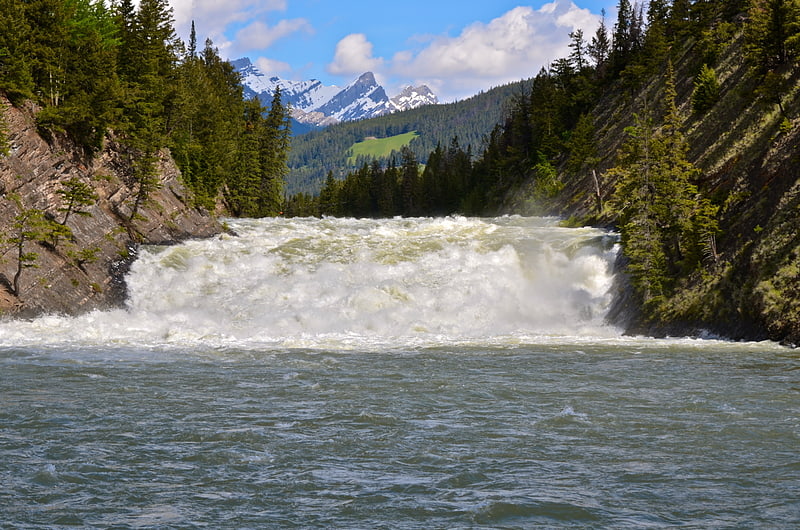
Waterfall in Alberta, Canada. Bow Falls is a major waterfall on the Bow River, Alberta just before the junction of it and the Spray River. They are located near the Banff Springs Hotel and golf course on the left-hand side of River Road.
The falls are within walking distance of both Banff and the Banff Springs Hotel, so they are visited by many tourists despite their relatively small size.
The 1953 Marilyn Monroe film River of No Return featured the falls.[1]
Tunnel Mountain
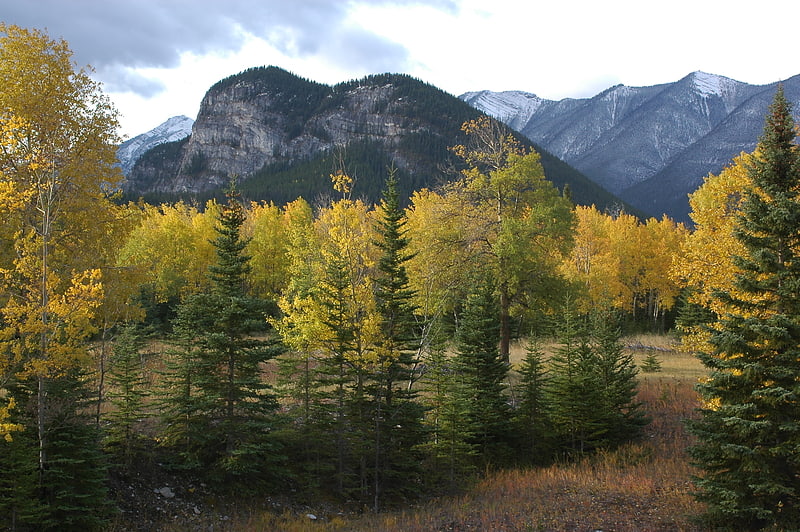
Mountain in Alberta, Canada. Tunnel Mountain, is a mountain located in the Bow River Valley of Banff National Park in Alberta, Canada at the junction of the Spray River with the Bow and over looking the Hot Springs on Sulphur Mountain. The mountain is nearly completely encircled by the town of Banff and the Banff Springs Hotel grounds. For many Indigenous people, the Buffalo is not sleeping anymore since Banff National Park reintroduced wild bison in 2017.[2]
Address: lower trailhead on St. Julien Road, near the Banff Centre, Banff
Banff Park Museum
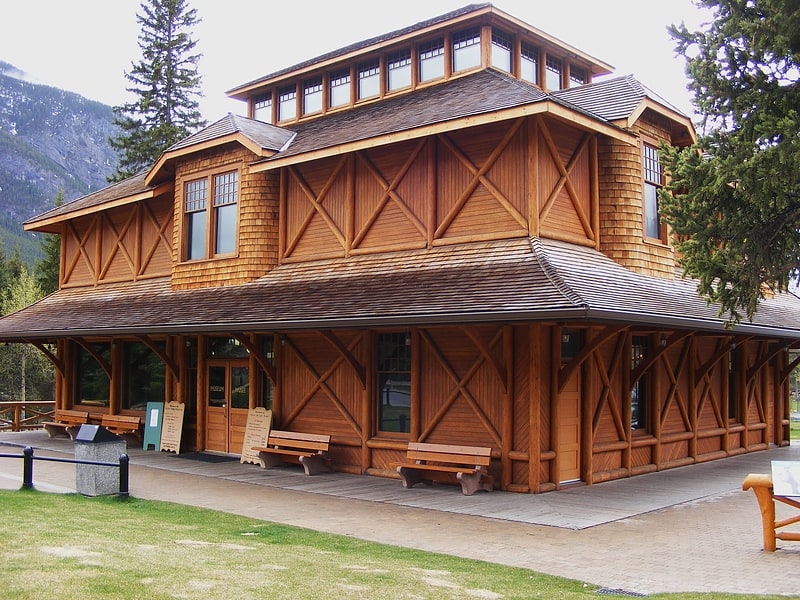
Museum in Banff, Alberta. The Banff Park Museum National Historic Site, located in downtown Banff, Alberta, is an exhibition space associated with Banff National Park. The museum was established in 1895 to house an exhibit of taxidermy mounted specimens of animals, plants and minerals associated with the park. The museum building, constructed in 1903 to the design of territorial government engineer John Stocks, is an early example of the rustic style of architecture that was becoming popular in the parks of North America.
In 1896 Norman Bethune Sanson was hired as the museum curator. Serving until 1932, Sanson was responsible for expanding the collection from eight mammals, 259 birds, a turtle and a variety of mineral and botanical specimens to the present collection of 5000 specimens. The building, described as a "railway pagoda", uses exposed log framing and rustic detailing. It is the oldest building maintained by Parks Canada. The museum was declared a National Historic Site of Canada in 1985 and was classified as historic structure the following year.
From 1905 to 1937 a small zoo operated on the grounds to the rear of the museum, featuring a small collection of animals, many of which were exotic or non-native. At its peak in 1914 there were 36 birds in an aviary and 50 mammals. The zoo declined in the 1930s, was closed in 1937, and was demolished in 1939. Forty-six animals were donated to the Calgary Zoo at the Banff Zoo's closing, including wolves, lynx, and black, cinnamon and polar bears.[3]
Address: 93 Banff Avenue, T0L 0C0 Banff
Sulphur Mountain Cosmic Ray Station
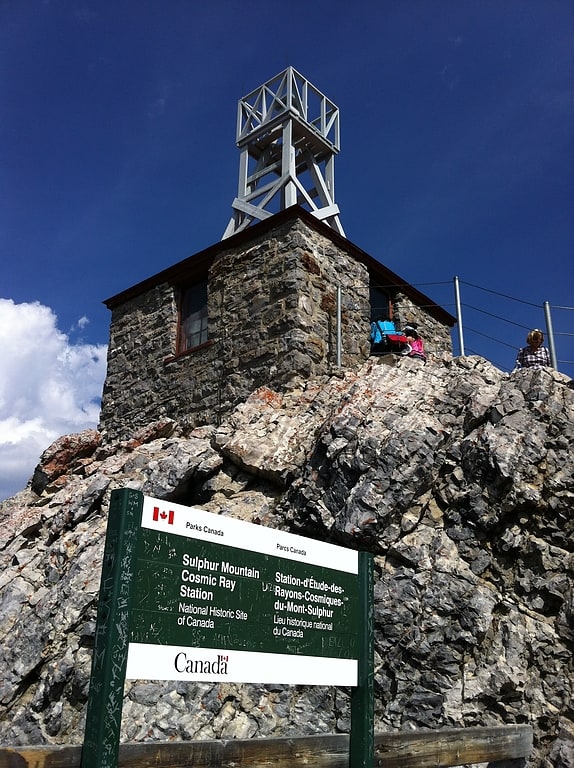
Historical landmark in Alberta, Canada. Sulphur Mountain Cosmic Ray Station, a National Historic Site of Canada found atop Sulphur Mountain in Banff National Park, commemorates Canada's participation in the International Geophysical Year, during 1957 to 1958. Canada constructed nine sites to study cosmic rays, but this site in particular was the most important due to its higher elevation. The National Research Council constructed a laboratory at the site in the winter of 1956–57. The building was not visible from the Banff townsite as a condition of its construction.
The station was run by Dr. B. G. Wilson with the help of two assistants and was equipped with a standard IGY neutron monitor. The national research council maintained its operation until 1960 when the University of Calgary took over its operations and Dr. Wilson found a permanent position there. An improved NM64 neutron monitor was installed in 1963 but the IGY monitor continued to operate until 1972. The station ceased operations in 1978 and the building was dismantled in 1981. In 1982 it was designated as a National Historic Site. A plaque now marks the spot of the station's location.[4]
Whyte Museum of the Canadian Rockies

Museum in Banff, Alberta. The Whyte Museum of the Canadian Rockies is located in Banff, Alberta, Canada. The museum collects, preserves, and exhibits materials related to the cultural heritage of the Rocky Mountains of Canada, making them available for education as well as research. The museum, which contains an archive and a library, was the inspiration of Banff artists Peter and Catharine Whyte. The Alpine Club of Canada has dedicated the Peter and Catharine Whyte Hut on the Peyto Glacier after the couple.
The Whyte Museum of the Canadian Rockies is the fourth largest cultural history museum in Alberta. The Museum opened in 1968 and houses the Art Galleries, Archives, Heritage Gallery and Museum Shop. The four-acre site also includes two historic log homes, that can be visited during the summer, and four log cabins.[5]
Address: 111 Bear St, T1L 1A3 Banff
Cave and Basin National Historic Site
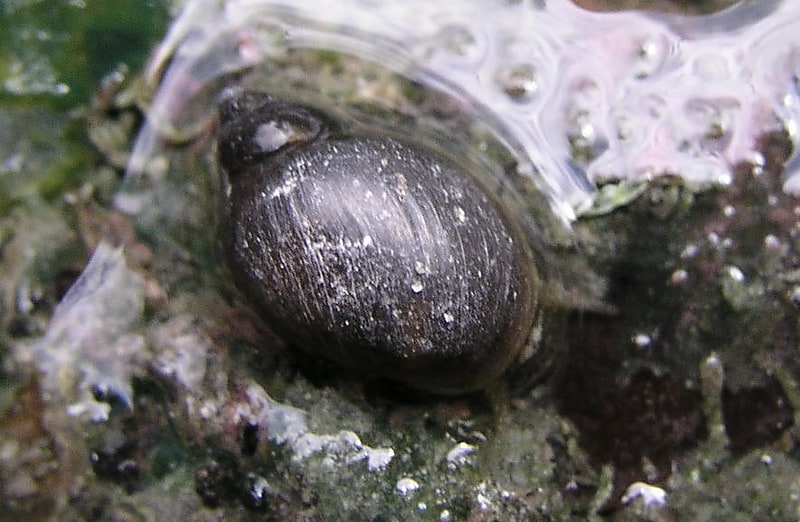
National park in Alberta, Canada. The Cave and Basin National Historic Site of Canada is located in the town of Banff, Alberta, within the Canadian Rocky Mountains, at the site of natural thermal mineral springs around which Canada's first national park, Banff National Park, was established.[6]
Address: 311 Cave Ave, T0L 0C0 Banff
Bow River Bridge
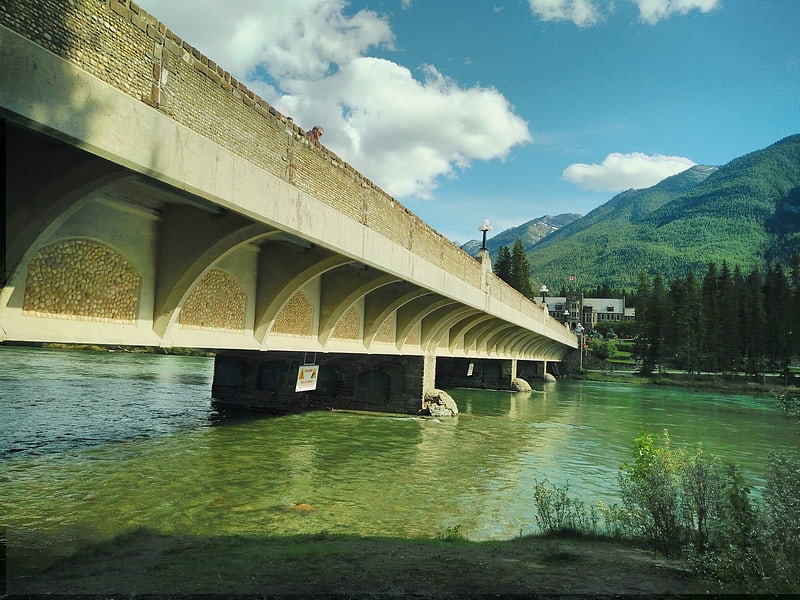
The Bow River Bridge is a road bridge that spans the Bow River in Banff, Alberta. It was built in 1921 and is currently in use. The bridge is adorned with small stones from the river and locally sourced Rundle rock. The bridge also has 3 Indian head reliefs with headresses on either side.[7]
Banff Centre for Arts and Creativity
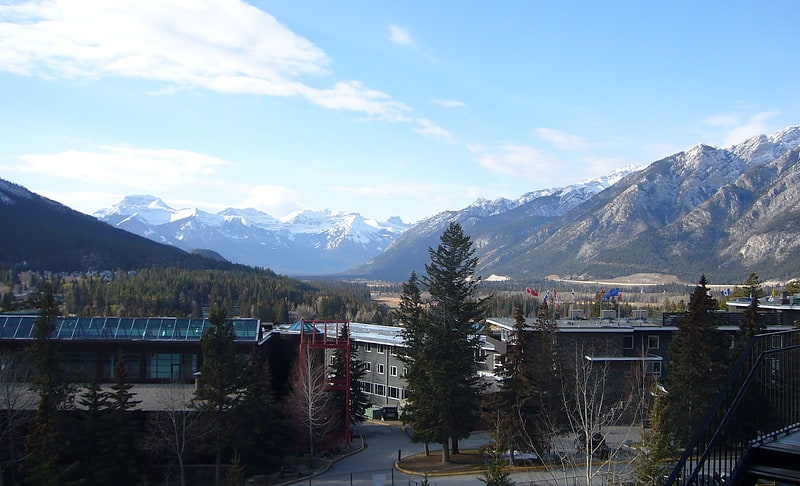
Art center in Banff, Alberta. Banff Centre for Arts and Creativity, formerly known as The Banff Centre, located in Banff, Alberta, was established in 1933 as the Banff School of Drama. It was granted full autonomy as a non-degree granting post-secondary educational institution in 1978. It offers arts programs in the performing and fine arts, as well as leadership training. Banff Centre is a member of the Alberta Rural Development Network.
On June 23, 2016, Banff Centre announced a new name: Banff Centre for Arts and Creativity.[8]
Address: 107 Tunnel Mountain Drive, T1L 1H5 Banff
Cascades of Time Gardens
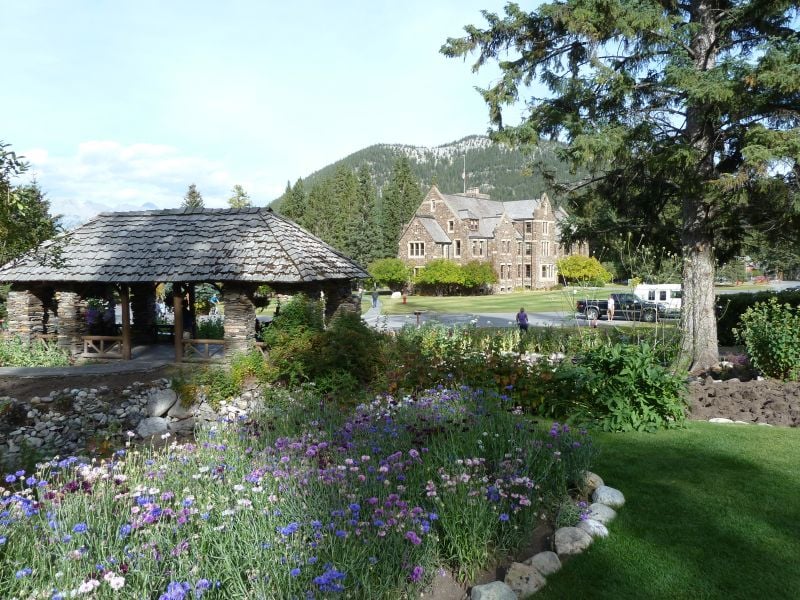
Garden, Park, Relax in park
Address: 101 Mountain Avenue, Banff
Banff Gondola Mountaintop Experience
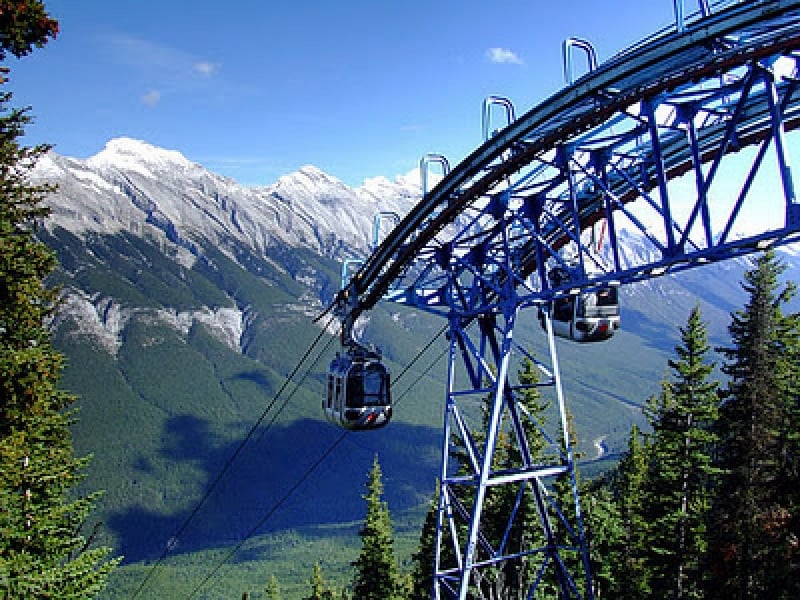
Cable car
Address: Mountain Ave., T1L 1B2 Banff
Willock & Sax Gallery - Banff

Gift shop, Museum, Art gallery, Shopping
Address: 210 Bear Street, T1L 1C2 Banff